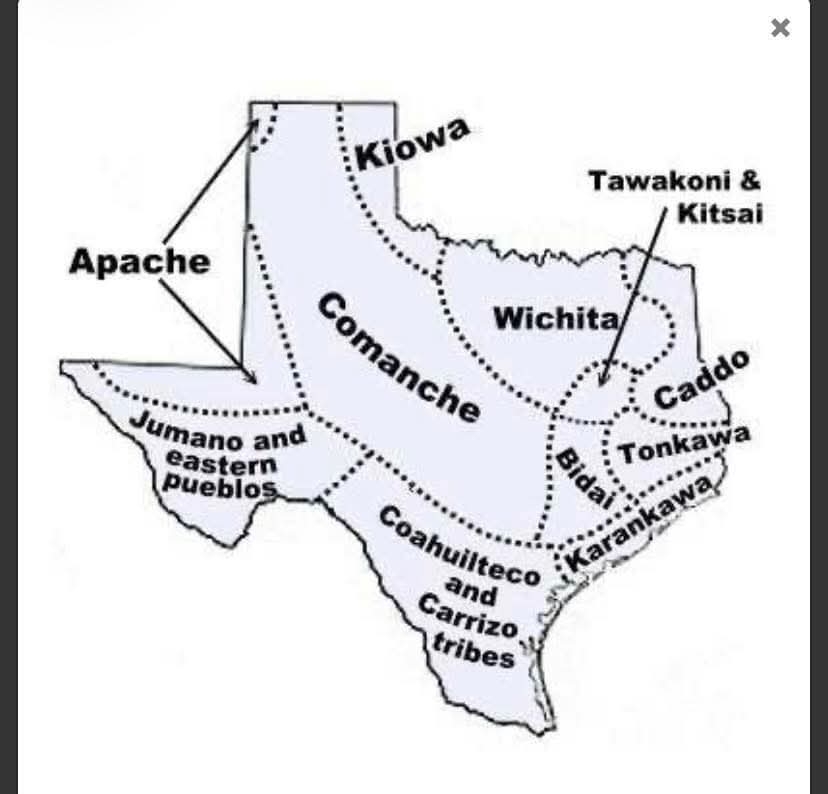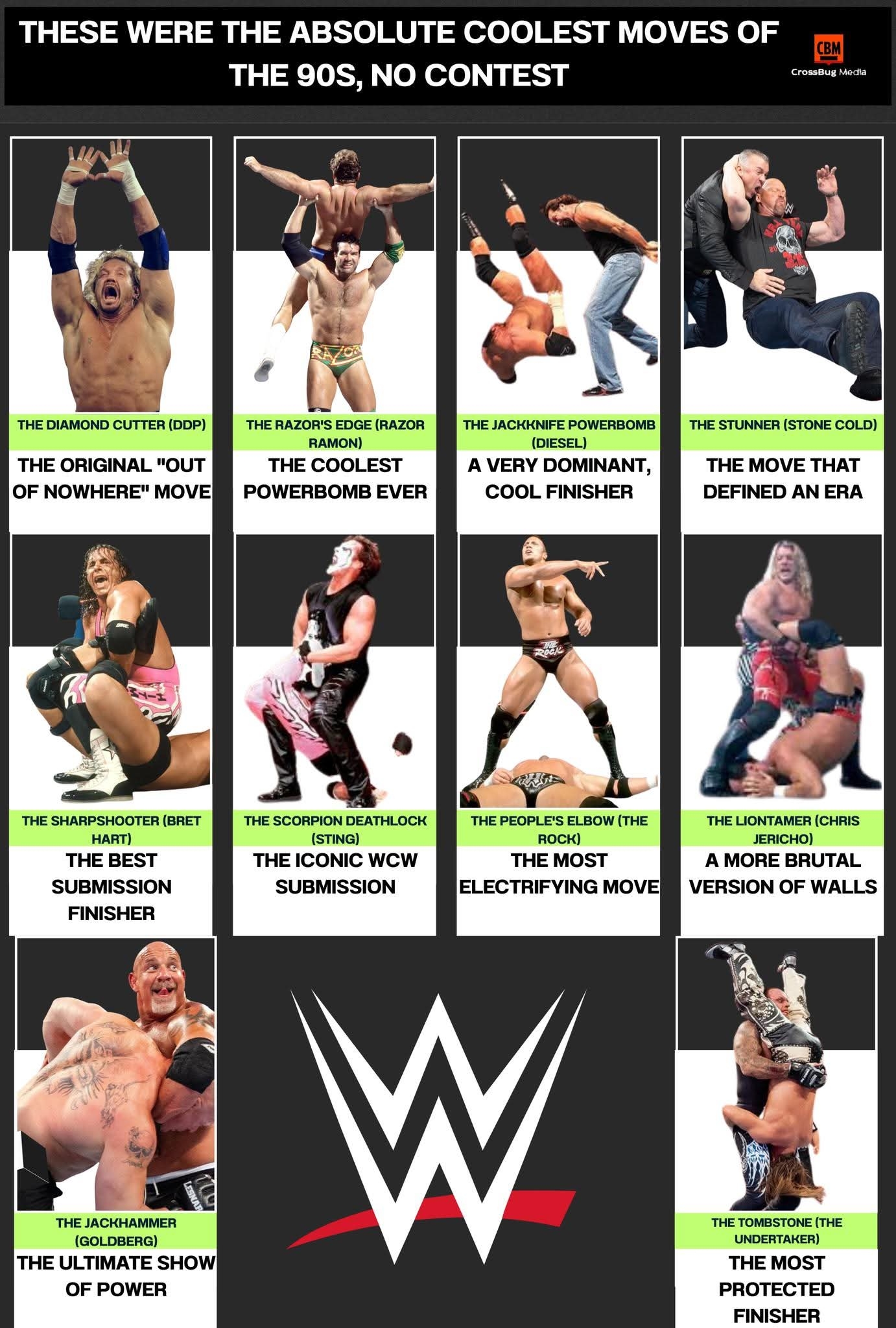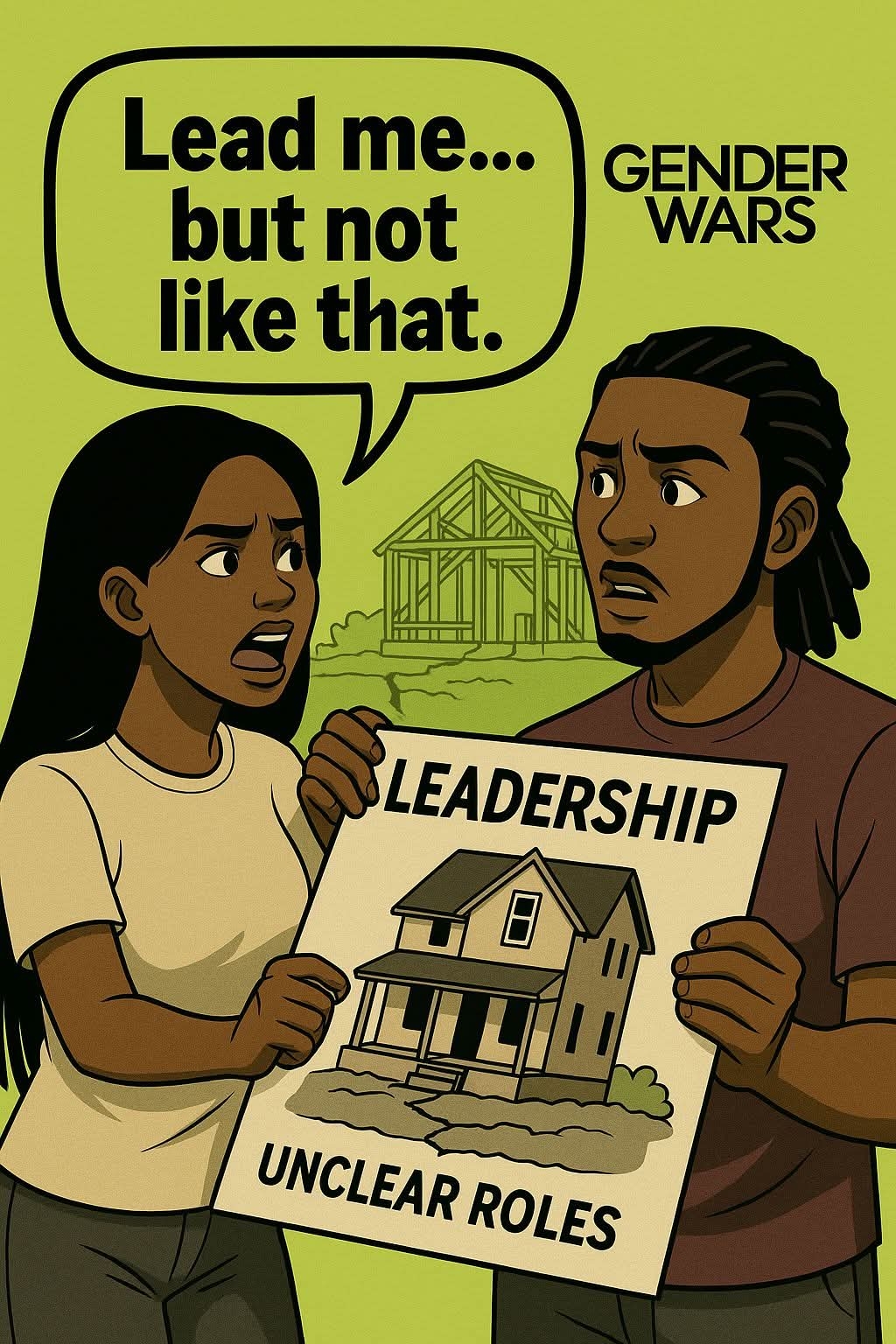Native American tribes who originally inhabited the Texas region, including the meaning of their names and their history.
1. Apache
• Meaning of the Name: Generally believed to derive from the Pueblo-Zuni word "Apachu," meaning "enemy." However, the Apache people call themselves "Inde," "Tinde," or "Tinneh," all meaning "the people."
• History and Culture:
• Originally from the north, they migrated to the American Southwest and Plains regions between the 12th and 16th centuries.
• They were nomadic hunter-gatherers, roaming vast territories to hunt buffalo and forage for food.
• After acquiring horses from the Spanish in the 17th century, they became a powerful mounted nation. The Lipan Apache were prominent in the Texas region.
2. Comanche
• Meaning of the Name: Derived from a Ute word meaning "anyone who wants to fight me all the time." The people refer to themselves as "Nʉmʉnʉʉ" (NUH-MUH-NUH), meaning "The People."
• History and Culture:
• Dominated the Southern Plains of Texas in the 18th and 19th centuries and were known as the "Lords of the Plains."
• They were originally part of the Shoshone tribe from Wyoming and moved south.
• They were exceptionally skilled at breeding and using horses, and their horseback fighting ability was unique and unmatched by other tribes of the time.
• Buffalo products were the core of their economy and way of life.
3. Kiowa
• Meaning of the Name: Derived from "Ka'I gwu" or "Ka'I gua" in their own language, meaning "principal people" or "leading people."
• History and Culture:
• Originally from western Montana, they migrated to the Yellowstone River and Black Hills, becoming skilled horsemen and buffalo hunters.
• They gradually moved south into the northern Texas and Oklahoma regions in the early 18th century.
• They were known for unique cultural practices like their Sun Dance ceremony.
• They had a prestigious warrior society known as the "Principal Dogs" or "Ten Bravest."
4. Jumano and Eastern Pueblos
Meaning of the Name: The term "Jumano" referred to at least three distinct groups in the Southwest and Southern Plains between 1500 and 1700. They were called "rayado" (striped or marked people) due to the distinctive horizontal striped patterns tattooed or painted on their faces.
• History and Culture:
• They were primarily buffalo hunters and traders, playing a crucial role as middlemen between the Spanish colonies and various Indigenous groups.
• Their main territory was in Central Texas, between the lower Pecos River and the Colorado River.
• "Eastern Pueblos" may refer to people living in villages like the "Humanas pueblos" in eastern New Mexico, with whom the Jumano were associated.
5. Coahuilteco and Carrizo Tribes
• Meaning of the Name:
• Coahuilteco: Not an original name for a single tribe, but an umbrella term created by Mexican linguists to group many bands and clans speaking various dialects in Northern Mexico and South Texas.
• Carrizo: A Spanish word meaning "reed," applied to many Coahuiltecan groups along the Rio Grande. (For example, the Comecrudo tribe, whose Spanish name means "eats raw meat," was also called Carrizo).
• History and Culture:
• They were nomadic hunter-gatherers who lived along the Rio Grande and throughout South Texas.
• They established villages near rivers and water sources.
• Due to disease and conflict with European settlers, their population was decimated. Many sought refuge in Spanish missions, where they adopted European farming techniques.
6. Karankawa
• Meaning of the Name: Generally believed to mean "dog-lovers" or "dog-raisers" in their own language, as they were known to keep dogs described as a fox-like or coyote-like breed.
• History and Culture:
• A coastal people who lived along the Texas Coast from Galveston Island to south of Corpus Christi.
• Their encounter with the Spanish explorer Álvar Núñez Cabeza de Vaca in 1528 marks the earliest recorded contact between Europeans and the First Peoples of Texas.
• They were nomadic, using dugout canoes to travel the shallow coastal waterways.
• They were known for tattooing their bodies.
7. Tonkawa
• Meaning of the Name: Comes from the Waco language, meaning "they all stay together." They called themselves "Titska Watitch," which means "the most human of people."
• History and Culture:
• A nomadic hunting tribe originally from eastern and central Texas and Oklahoma, hunting buffalo, deer, and other game.
• They lived in about 20 independent wandering bands.
• Historically, they were often at war with neighboring tribes like the Apache and Comanche.
• They faced forced relocations and population decline due to violence in the 19th century.
8. Bidai
• Meaning of the Name: A Caddo word for "brushwood," named after the local geography along Bedias Creek where they lived. They referred to themselves as "Quasmigdo."
• History and Culture:
• Settled in East Texas, between the Brazos and Neches Rivers.
• Some historical records suggest they may be one of the oldest tribes in Texas.
• They practiced agriculture (maize), hunting (bison, deer), and fishing.
• They were allied with Caddo and Atakapan tribes.
9. Caddo
• Meaning of the Name: Derived from the French abbreviation of "Kadohadacho," a Caddo word meaning "real chief" or "real Caddo."
• History and Culture:
• A confederacy of about 25 affiliated groups centered around the Red River in Texas, Arkansas, Louisiana, and Oklahoma.
• They were sedentary agriculturalists, focusing on farming.
• They developed complex social and political systems, centered around the construction and use of earthen temple and burial mounds.
• Their leadership hierarchy included the xinesi (spiritual leader), caddi (principal headman), and canahas (subordinate headmen). The name of the state, Texas, comes from the Caddo word taysha, meaning "friend" or "ally."
10. Wichita
• Meaning of the Name: The origin is unknown, but they called themselves "Kitikiti'sh," meaning "the people" or "the preeminent people." French traders called them "Pani Piqué" (Tattooed Pawnee), referring to their distinctive tattoos.
• History and Culture:
• A confederacy of subtribes (including Taovaya, Tawakoni, Waco, and Kichai) who mainly lived in Northern Texas and South-Central Kansas.
• They combined agriculture (corn, beans) with hunting (buffalo, deer).
• They lived in distinctive conical, haystack-shaped houses made of grass and matting.
• Their society was matrilocal (married couples lived with the wife's family) and matrilineal (descent was traced through the mother's line).
11. Tawakoni & Kitsai
• Tawakoni:
• Meaning of the Name: Believed to mean "river bend among red sand hills." The French also referred to them as "Three Canes."
• History: A Caddoan tribe and member of the Wichita Confederacy, they settled along the Brazos and Trinity Rivers in Texas in the 18th century. They shared similar agricultural and housing methods with the Wichita.
• Kitsai:
• A subtribe of the Wichita Confederacy. Notably, the Kitsai were the only group within the Wichita Confederacy to speak a distinct Caddoan language.
Note : Most descendants of these historic Texas tribes were forcibly relocated to reservations, primarily in Oklahoma, during the 19th century. However, as noted in the follow-up, three federally recognized tribes and numerous descendants of the original tribes continue to reside in Texas today.
1. Apache
• Meaning of the Name: Generally believed to derive from the Pueblo-Zuni word "Apachu," meaning "enemy." However, the Apache people call themselves "Inde," "Tinde," or "Tinneh," all meaning "the people."
• History and Culture:
• Originally from the north, they migrated to the American Southwest and Plains regions between the 12th and 16th centuries.
• They were nomadic hunter-gatherers, roaming vast territories to hunt buffalo and forage for food.
• After acquiring horses from the Spanish in the 17th century, they became a powerful mounted nation. The Lipan Apache were prominent in the Texas region.
2. Comanche
• Meaning of the Name: Derived from a Ute word meaning "anyone who wants to fight me all the time." The people refer to themselves as "Nʉmʉnʉʉ" (NUH-MUH-NUH), meaning "The People."
• History and Culture:
• Dominated the Southern Plains of Texas in the 18th and 19th centuries and were known as the "Lords of the Plains."
• They were originally part of the Shoshone tribe from Wyoming and moved south.
• They were exceptionally skilled at breeding and using horses, and their horseback fighting ability was unique and unmatched by other tribes of the time.
• Buffalo products were the core of their economy and way of life.
3. Kiowa
• Meaning of the Name: Derived from "Ka'I gwu" or "Ka'I gua" in their own language, meaning "principal people" or "leading people."
• History and Culture:
• Originally from western Montana, they migrated to the Yellowstone River and Black Hills, becoming skilled horsemen and buffalo hunters.
• They gradually moved south into the northern Texas and Oklahoma regions in the early 18th century.
• They were known for unique cultural practices like their Sun Dance ceremony.
• They had a prestigious warrior society known as the "Principal Dogs" or "Ten Bravest."
4. Jumano and Eastern Pueblos
Meaning of the Name: The term "Jumano" referred to at least three distinct groups in the Southwest and Southern Plains between 1500 and 1700. They were called "rayado" (striped or marked people) due to the distinctive horizontal striped patterns tattooed or painted on their faces.
• History and Culture:
• They were primarily buffalo hunters and traders, playing a crucial role as middlemen between the Spanish colonies and various Indigenous groups.
• Their main territory was in Central Texas, between the lower Pecos River and the Colorado River.
• "Eastern Pueblos" may refer to people living in villages like the "Humanas pueblos" in eastern New Mexico, with whom the Jumano were associated.
5. Coahuilteco and Carrizo Tribes
• Meaning of the Name:
• Coahuilteco: Not an original name for a single tribe, but an umbrella term created by Mexican linguists to group many bands and clans speaking various dialects in Northern Mexico and South Texas.
• Carrizo: A Spanish word meaning "reed," applied to many Coahuiltecan groups along the Rio Grande. (For example, the Comecrudo tribe, whose Spanish name means "eats raw meat," was also called Carrizo).
• History and Culture:
• They were nomadic hunter-gatherers who lived along the Rio Grande and throughout South Texas.
• They established villages near rivers and water sources.
• Due to disease and conflict with European settlers, their population was decimated. Many sought refuge in Spanish missions, where they adopted European farming techniques.
6. Karankawa
• Meaning of the Name: Generally believed to mean "dog-lovers" or "dog-raisers" in their own language, as they were known to keep dogs described as a fox-like or coyote-like breed.
• History and Culture:
• A coastal people who lived along the Texas Coast from Galveston Island to south of Corpus Christi.
• Their encounter with the Spanish explorer Álvar Núñez Cabeza de Vaca in 1528 marks the earliest recorded contact between Europeans and the First Peoples of Texas.
• They were nomadic, using dugout canoes to travel the shallow coastal waterways.
• They were known for tattooing their bodies.
7. Tonkawa
• Meaning of the Name: Comes from the Waco language, meaning "they all stay together." They called themselves "Titska Watitch," which means "the most human of people."
• History and Culture:
• A nomadic hunting tribe originally from eastern and central Texas and Oklahoma, hunting buffalo, deer, and other game.
• They lived in about 20 independent wandering bands.
• Historically, they were often at war with neighboring tribes like the Apache and Comanche.
• They faced forced relocations and population decline due to violence in the 19th century.
8. Bidai
• Meaning of the Name: A Caddo word for "brushwood," named after the local geography along Bedias Creek where they lived. They referred to themselves as "Quasmigdo."
• History and Culture:
• Settled in East Texas, between the Brazos and Neches Rivers.
• Some historical records suggest they may be one of the oldest tribes in Texas.
• They practiced agriculture (maize), hunting (bison, deer), and fishing.
• They were allied with Caddo and Atakapan tribes.
9. Caddo
• Meaning of the Name: Derived from the French abbreviation of "Kadohadacho," a Caddo word meaning "real chief" or "real Caddo."
• History and Culture:
• A confederacy of about 25 affiliated groups centered around the Red River in Texas, Arkansas, Louisiana, and Oklahoma.
• They were sedentary agriculturalists, focusing on farming.
• They developed complex social and political systems, centered around the construction and use of earthen temple and burial mounds.
• Their leadership hierarchy included the xinesi (spiritual leader), caddi (principal headman), and canahas (subordinate headmen). The name of the state, Texas, comes from the Caddo word taysha, meaning "friend" or "ally."
10. Wichita
• Meaning of the Name: The origin is unknown, but they called themselves "Kitikiti'sh," meaning "the people" or "the preeminent people." French traders called them "Pani Piqué" (Tattooed Pawnee), referring to their distinctive tattoos.
• History and Culture:
• A confederacy of subtribes (including Taovaya, Tawakoni, Waco, and Kichai) who mainly lived in Northern Texas and South-Central Kansas.
• They combined agriculture (corn, beans) with hunting (buffalo, deer).
• They lived in distinctive conical, haystack-shaped houses made of grass and matting.
• Their society was matrilocal (married couples lived with the wife's family) and matrilineal (descent was traced through the mother's line).
11. Tawakoni & Kitsai
• Tawakoni:
• Meaning of the Name: Believed to mean "river bend among red sand hills." The French also referred to them as "Three Canes."
• History: A Caddoan tribe and member of the Wichita Confederacy, they settled along the Brazos and Trinity Rivers in Texas in the 18th century. They shared similar agricultural and housing methods with the Wichita.
• Kitsai:
• A subtribe of the Wichita Confederacy. Notably, the Kitsai were the only group within the Wichita Confederacy to speak a distinct Caddoan language.
Note : Most descendants of these historic Texas tribes were forcibly relocated to reservations, primarily in Oklahoma, during the 19th century. However, as noted in the follow-up, three federally recognized tribes and numerous descendants of the original tribes continue to reside in Texas today.
Native American tribes who originally inhabited the Texas region, including the meaning of their names and their history.
1. Apache
• Meaning of the Name: Generally believed to derive from the Pueblo-Zuni word "Apachu," meaning "enemy." However, the Apache people call themselves "Inde," "Tinde," or "Tinneh," all meaning "the people."
• History and Culture:
• Originally from the north, they migrated to the American Southwest and Plains regions between the 12th and 16th centuries.
• They were nomadic hunter-gatherers, roaming vast territories to hunt buffalo and forage for food.
• After acquiring horses from the Spanish in the 17th century, they became a powerful mounted nation. The Lipan Apache were prominent in the Texas region.
2. Comanche
• Meaning of the Name: Derived from a Ute word meaning "anyone who wants to fight me all the time." The people refer to themselves as "Nʉmʉnʉʉ" (NUH-MUH-NUH), meaning "The People."
• History and Culture:
• Dominated the Southern Plains of Texas in the 18th and 19th centuries and were known as the "Lords of the Plains."
• They were originally part of the Shoshone tribe from Wyoming and moved south.
• They were exceptionally skilled at breeding and using horses, and their horseback fighting ability was unique and unmatched by other tribes of the time.
• Buffalo products were the core of their economy and way of life.
3. Kiowa
• Meaning of the Name: Derived from "Ka'I gwu" or "Ka'I gua" in their own language, meaning "principal people" or "leading people."
• History and Culture:
• Originally from western Montana, they migrated to the Yellowstone River and Black Hills, becoming skilled horsemen and buffalo hunters.
• They gradually moved south into the northern Texas and Oklahoma regions in the early 18th century.
• They were known for unique cultural practices like their Sun Dance ceremony.
• They had a prestigious warrior society known as the "Principal Dogs" or "Ten Bravest."
4. Jumano and Eastern Pueblos
Meaning of the Name: The term "Jumano" referred to at least three distinct groups in the Southwest and Southern Plains between 1500 and 1700. They were called "rayado" (striped or marked people) due to the distinctive horizontal striped patterns tattooed or painted on their faces.
• History and Culture:
• They were primarily buffalo hunters and traders, playing a crucial role as middlemen between the Spanish colonies and various Indigenous groups.
• Their main territory was in Central Texas, between the lower Pecos River and the Colorado River.
• "Eastern Pueblos" may refer to people living in villages like the "Humanas pueblos" in eastern New Mexico, with whom the Jumano were associated.
5. Coahuilteco and Carrizo Tribes
• Meaning of the Name:
• Coahuilteco: Not an original name for a single tribe, but an umbrella term created by Mexican linguists to group many bands and clans speaking various dialects in Northern Mexico and South Texas.
• Carrizo: A Spanish word meaning "reed," applied to many Coahuiltecan groups along the Rio Grande. (For example, the Comecrudo tribe, whose Spanish name means "eats raw meat," was also called Carrizo).
• History and Culture:
• They were nomadic hunter-gatherers who lived along the Rio Grande and throughout South Texas.
• They established villages near rivers and water sources.
• Due to disease and conflict with European settlers, their population was decimated. Many sought refuge in Spanish missions, where they adopted European farming techniques.
6. Karankawa
• Meaning of the Name: Generally believed to mean "dog-lovers" or "dog-raisers" in their own language, as they were known to keep dogs described as a fox-like or coyote-like breed.
• History and Culture:
• A coastal people who lived along the Texas Coast from Galveston Island to south of Corpus Christi.
• Their encounter with the Spanish explorer Álvar Núñez Cabeza de Vaca in 1528 marks the earliest recorded contact between Europeans and the First Peoples of Texas.
• They were nomadic, using dugout canoes to travel the shallow coastal waterways.
• They were known for tattooing their bodies.
7. Tonkawa
• Meaning of the Name: Comes from the Waco language, meaning "they all stay together." They called themselves "Titska Watitch," which means "the most human of people."
• History and Culture:
• A nomadic hunting tribe originally from eastern and central Texas and Oklahoma, hunting buffalo, deer, and other game.
• They lived in about 20 independent wandering bands.
• Historically, they were often at war with neighboring tribes like the Apache and Comanche.
• They faced forced relocations and population decline due to violence in the 19th century.
8. Bidai
• Meaning of the Name: A Caddo word for "brushwood," named after the local geography along Bedias Creek where they lived. They referred to themselves as "Quasmigdo."
• History and Culture:
• Settled in East Texas, between the Brazos and Neches Rivers.
• Some historical records suggest they may be one of the oldest tribes in Texas.
• They practiced agriculture (maize), hunting (bison, deer), and fishing.
• They were allied with Caddo and Atakapan tribes.
9. Caddo
• Meaning of the Name: Derived from the French abbreviation of "Kadohadacho," a Caddo word meaning "real chief" or "real Caddo."
• History and Culture:
• A confederacy of about 25 affiliated groups centered around the Red River in Texas, Arkansas, Louisiana, and Oklahoma.
• They were sedentary agriculturalists, focusing on farming.
• They developed complex social and political systems, centered around the construction and use of earthen temple and burial mounds.
• Their leadership hierarchy included the xinesi (spiritual leader), caddi (principal headman), and canahas (subordinate headmen). The name of the state, Texas, comes from the Caddo word taysha, meaning "friend" or "ally."
10. Wichita
• Meaning of the Name: The origin is unknown, but they called themselves "Kitikiti'sh," meaning "the people" or "the preeminent people." French traders called them "Pani Piqué" (Tattooed Pawnee), referring to their distinctive tattoos.
• History and Culture:
• A confederacy of subtribes (including Taovaya, Tawakoni, Waco, and Kichai) who mainly lived in Northern Texas and South-Central Kansas.
• They combined agriculture (corn, beans) with hunting (buffalo, deer).
• They lived in distinctive conical, haystack-shaped houses made of grass and matting.
• Their society was matrilocal (married couples lived with the wife's family) and matrilineal (descent was traced through the mother's line).
11. Tawakoni & Kitsai
• Tawakoni:
• Meaning of the Name: Believed to mean "river bend among red sand hills." The French also referred to them as "Three Canes."
• History: A Caddoan tribe and member of the Wichita Confederacy, they settled along the Brazos and Trinity Rivers in Texas in the 18th century. They shared similar agricultural and housing methods with the Wichita.
• Kitsai:
• A subtribe of the Wichita Confederacy. Notably, the Kitsai were the only group within the Wichita Confederacy to speak a distinct Caddoan language.
Note : Most descendants of these historic Texas tribes were forcibly relocated to reservations, primarily in Oklahoma, during the 19th century. However, as noted in the follow-up, three federally recognized tribes and numerous descendants of the original tribes continue to reside in Texas today.
0 Comments
0 Shares
370 Views






